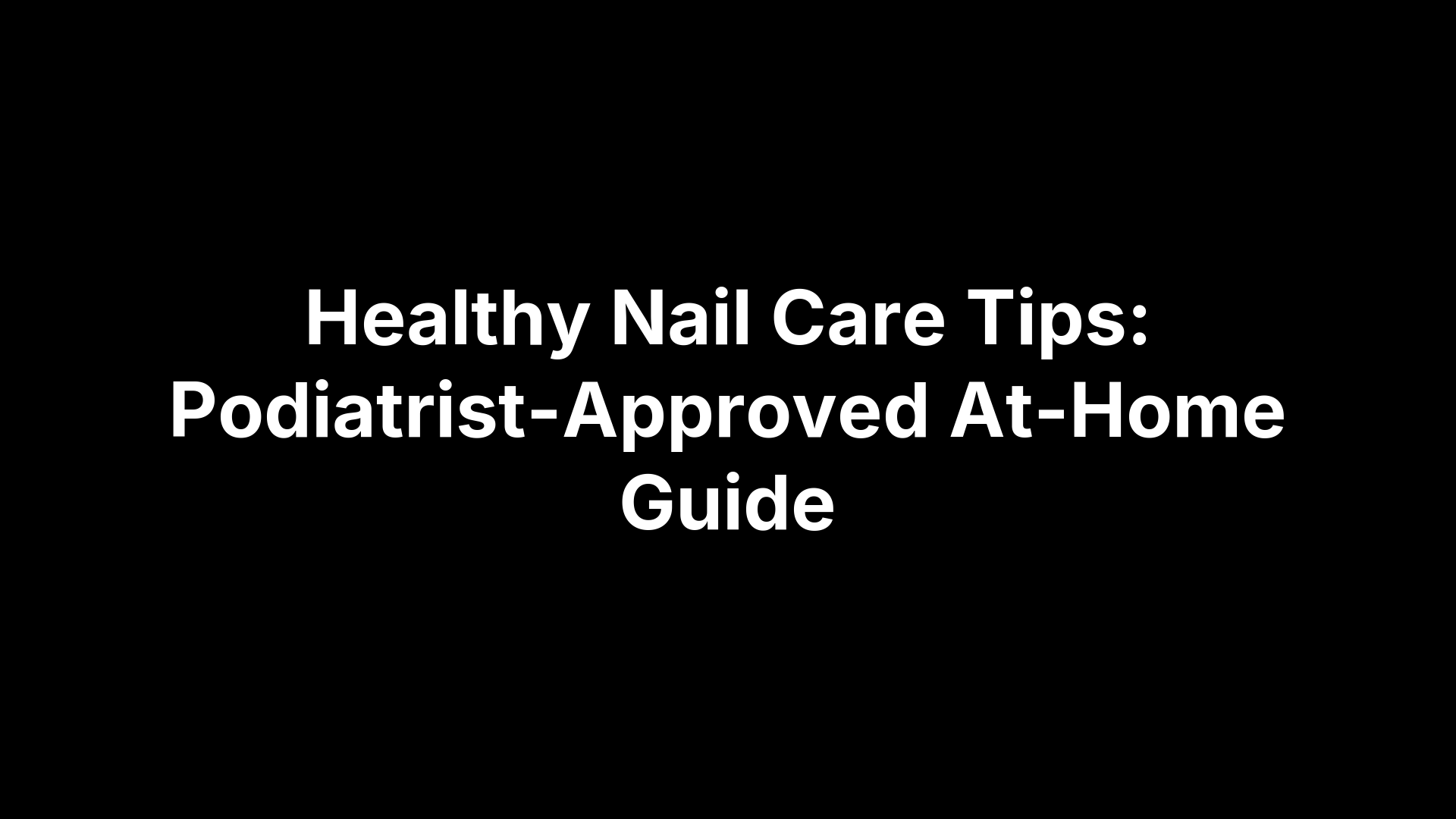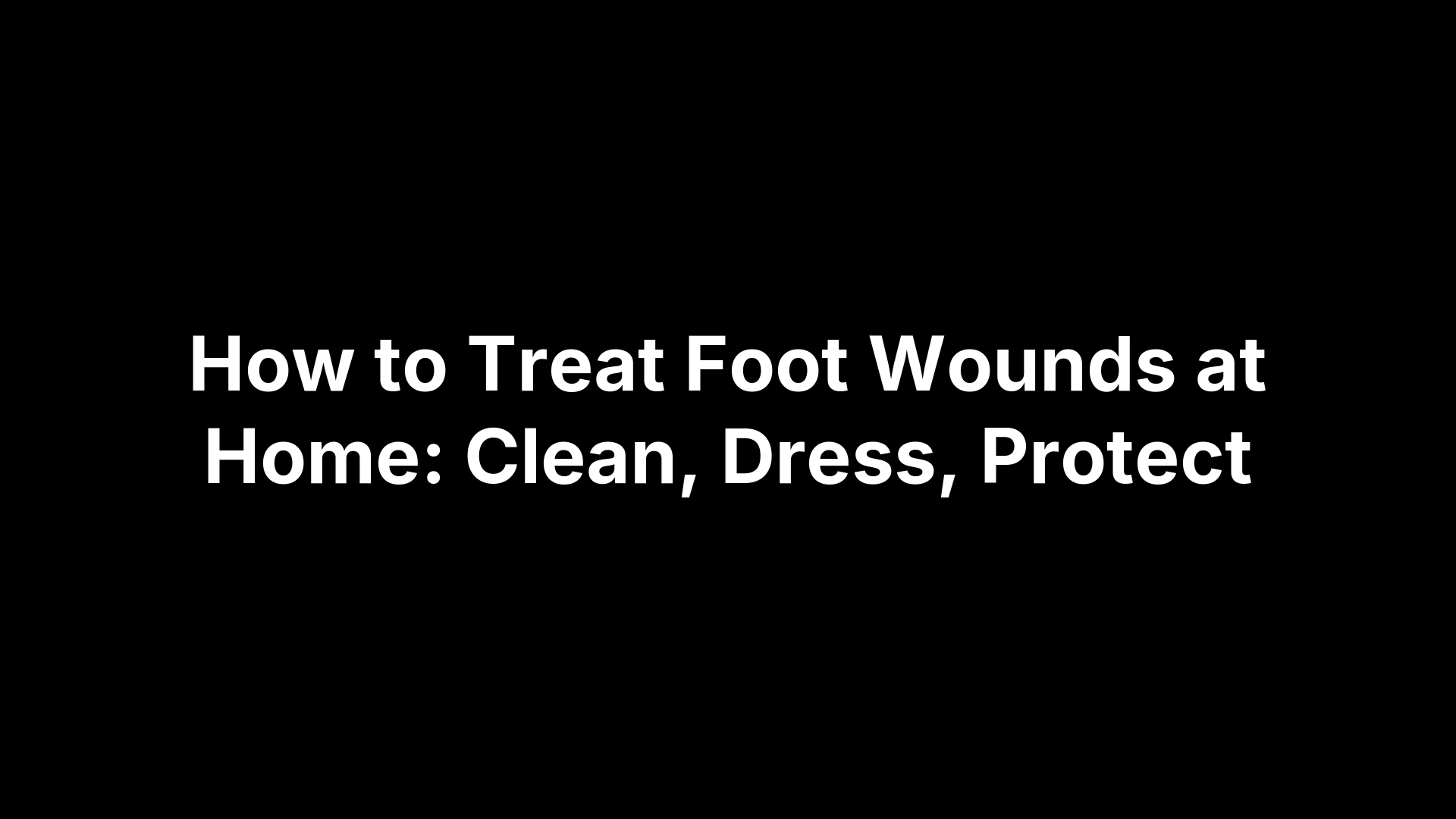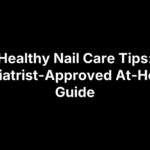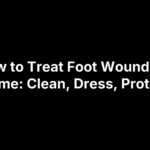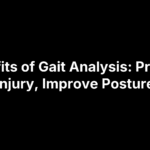Ankle swelling—medically called peripheral edema—shows up when fluid escapes tiny blood vessels and pools around the joint. The trigger can be as harmless as a rolled ankle or as serious as a blood clot, heart disease, or infection. Most puffiness eases with rest and elevation, but some cases demand immediate medical attention.
Because gravity draws every extra drop of fluid to the lowest point of your body, the ankle is often the first area to balloon after a long flight, an intense workout, or a flare-up of an underlying condition. This guide breaks down the 15 most common reasons ankles swell—ranked from everyday sprains to life-threatening disorders—and hands you quick, evidence-based relief tactics. You’ll learn how to spot red-flag symptoms, perform a simple self-check, and decide when it’s time to book an appointment with a foot and ankle specialist.
Feel free to skim the quick-relief section or dive deep into each cause—either way, you’ll leave with clear next steps for protecting your mobility and peace of mind.
1. At a Glance: When Ankle Swelling Demands Urgent Care
Most swollen ankles are annoying rather than dangerous, but certain “red-flag” features turn a wait-and-see problem into a call-your-doctor-now situation. The table below makes it easy to separate everyday puffiness from emergencies linked to clots, infections, or organ failure.
Red-Flag Checklist
- Sudden, one-sided swelling after inactivity or travel
- Sharp calf pain, warmth, or tenderness (possible DVT)
- Chest pain or shortness of breath accompanying the swelling
- Fever, chills, or rapidly spreading redness (possible cellulitis or septic joint)
- Shiny, tight, or purple skin that doesn’t bounce back when pressed
- New numbness, tingling, or loss of foot pulses
- Inability to bear weight or a visible deformity after injury
- Severe headache, vision changes, or high blood pressure during pregnancy
- Rapid weight gain >2 lb in 24 h or nighttime breathlessness (heart failure warning)
Mild vs. Serious Swelling
- Soft, bilateral swelling after a long day on your feet usually eases with elevation and compressive sleeves.
- Firm, painful, or asymmetric swelling that worsens over hours, especially if paired with systemic symptoms, needs same-day medical evaluation.
- When in doubt, treat swelling like chest pain: better to rule out a clot or infection early than wish you had later.
How to Quickly Self-Assess
- Inspect both ankles in good light for color, heat, or open skin.
- Press a thumb on the bony front for 5 seconds. A dent that remains = pitting edema.
- Compare the size and shape of each ankle; note any asymmetry.
- Rate your pain from 0–10 while flexing and pointing the foot.
Bring these observations to your provider—they speed up figuring out what causes ankle swelling and which test you really need.
2. The 15 Most Common Reasons Your Ankles Swell
Below you’ll find the ankle-puffing usual suspects, arranged from garden-variety sprains we treat daily to the systemic illnesses that need coordinated care. As you read, keep asking, “Does this match my situation?”—because nailing the real trigger, not just draining fluid, is what fixes the problem for good.
1. Minor Ankle Sprain or Soft-Tissue Injury
A sudden twist stretches or tears ankle ligaments. Torn fibers bleed and inflame, letting plasma leak into surrounding tissue—hello, balloon ankle.
Key clues
- Bruising and pinpoint pain when you roll the foot inward or outward
- Swelling starts within a few hours
Quick relief - R.I.C.E. for the first 48 h, then gentle ankle circles and alphabet tracing
When to see a doctor - Can’t take four steps, numb toes, or swelling that worsens after day three
2. Bone Fracture or Severe Ankle Trauma
A stress crack or full break triggers massive internal bleeding and protective fluid build-up.
Key clues
- Immediate puffiness, grinding sensation, or deformity
- Pain spikes when you try to bear weight
Quick relief - Immobilize with a splint, keep the foot level with the heart, ice 15 min on/15 min off
Red flags - Any visible angulation, open skin, or loss of pulses—urgent X-ray and casting/surgery
3. Achilles Tendonitis or Rupture
Overuse micro-tears (or an abrupt sprint) inflame the thick cord above your heel. Fluid gathers where the tendon inserts.
Key clues
- Morning stiffness, swelling 2–6 cm above the heel
- A sharp “pop” plus a gap you can feel = likely rupture
Quick relief - Heel lifts, gentle calf stretches, NSAIDs; boot or surgical repair if ruptured
See a doctor if - You can’t push off the ground or stand on tiptoes
4. Infection (Cellulitis or Septic Joint)
Bacteria slip through a cut or migrate via blood, causing heat and capillary leakage.
Key clues
- Red, shiny, rapidly expanding swelling, often with fever or chills
Quick relief - Mark the border with a pen, elevate, start prescribed oral or IV antibiotics
Emergency signs - Red streaks up the leg, high fever, severe pain with ankle movement
5. Venous Insufficiency
Leg vein valves turn “leaky,” so blood pools below the knee; pressure forces water out into tissues.
Key clues
- Soft pitting edema, worse after long standing
- Brownish skin staining and itching around the ankles
Quick relief - 15–20 mmHg compression socks, calf raises, nightly elevation
Doctor time - Ulcers, weeping skin, or swelling that climbs past the calf
6. Lymphedema
Damaged or missing lymph vessels can’t drain protein-rich fluid, so it stagnates.
Key clues
- Non-pitting, doughy swelling that doesn’t deflate overnight
- Thickened “peau d’orange” skin folds
Quick relief - Manual lymphatic drainage (specialized massage), daytime compression wrapping
Red flags - Sudden size jump, redness, or fever (possible cellulitis on top of lymphedema)
7. Deep Vein Thrombosis (DVT)
A clot blocks venous return, forcing fluid outward; typically one leg only.
Key clues
- Calf pain, warmth, swelling that appears over hours
- Positive Homan’s sign (pain with dorsiflexion)
Quick relief - Keep leg still and elevated; head to the ER for ultrasound and anticoagulation
Danger - Chest pain or shortness of breath = possible pulmonary embolism
8. Congestive Heart Failure
Weak pumping lets fluid back up in the venous system; gravity parks it in your ankles.
Key clues
- Bilateral evening swelling, weight gain, pillow-stacking breathlessness
- Rings and shoes feel tighter by nightfall
Quick relief - Limit sodium (<2 g/day), elevate legs, follow diuretic schedule
Call the doctor if - Rapid weight gain >2 lb in 24 h, increasing breathlessness, or frothy cough
9. Kidney Disease or Nephrotic Syndrome
Failing filters lose protein into urine; low blood protein drags fluid from vessels into tissues.
Key clues
- Puffy eyelids in the morning plus ankle swelling by afternoon
- Foamy urine, high blood pressure
Quick relief - Limit salt, monitor fluid intake, keep legs up
Urgent signs - Sudden big jump in swelling, decreased urine output, or severe fatigue
10. Liver Cirrhosis
Scarring lowers albumin production and raises portal pressure, shunting fluid downward.
Key clues
- Ankles + belly ascites, yellow eyes (jaundice), spider veins
Quick relief - Low-sodium diet, prescribed diuretics, compression stockings
Get medical help - Black tarry stools, mental confusion, or new bleeding gums
11. Pregnancy & Preeclampsia
Normal pregnancy expands blood volume; hormones relax veins, causing pooling. Preeclampsia adds dangerous high blood pressure.
Key clues
- Gradual, symmetric ankle swelling after week 20
- Red flag combo: swelling + headache, vision changes, or RUQ pain
Safe relief - Sleep on left side, ankle pumps, maternity-grade compression socks
Call OB if - Sudden spike in swelling, hand/face puffiness, or BP >140/90
12. Medication-Induced Edema
Certain drugs relax blood-vessel walls or alter kidney salt handling.
Common culprits
- Calcium-channel blockers (amlodipine), NSAIDs, steroids, TZD diabetes meds
Quick relief - Ask prescriber about dose timing, switch, or adding a diuretic; do NOT self-stop cardiac meds
Doctor visit - New swelling within weeks of a prescription change or combo therapy
13. Prolonged Standing, Sitting, or Travel
Inactive calf muscles act like a broken sump pump, letting venous fluid stagnate.
Key clues
- Ankles look fine in the morning, puff up by late day or after flights
Quick relief - Walk at least 5 min every hour, ankle pumps in your seat, 15–20 mmHg compression socks
Seek care if - One-sided swelling persists more than 24 h post-travel (rule out DVT)
14. High-Sodium Diet, Obesity, Dehydration Paradox
Salt pulls water into the bloodstream; obesity increases venous pressure; dehydration sparks hormone-driven water retention.
Key clues
- General bloating, tight shoes after salty meals, body-mass index >30
Quick swaps - Swap processed snacks for fresh produce, use herbs instead of salt, drink
0.5–0.7 oz × body-weight (lb)of water daily
Doctor time - Swelling plus uncontrolled hypertension or unexplained weight gain
15. Allergic Reactions & Insect Bites
Histamine release makes capillaries leaky, causing rapid local swelling that may mimic an injury.
Key clues
- Itchy, red welt or cluster, onset within minutes to hours of sting or allergen
Quick relief - Cold compress, oral antihistamine, topical 1% hydrocortisone
Emergency signs - Hives spreading beyond bite, lip or tongue swelling, wheezing—activate 911 for possible anaphylaxis
With these fifteen roadmaps, you can pinpoint what causes ankle swelling in your case and take smarter next steps—whether that’s a compression sock run, a salt-shaker purge, or a same-day trip to urgent care.
3. Quick Relief: 10 Evidence-Backed Ways to Reduce Swelling Fast
The tactics below tame puffiness while you track down the real culprit. They won’t heal a fracture or dissolve a clot, but they can make walking, sleeping, and fitting into your shoes a lot easier. Mix and match as your situation allows, and remember that any swelling paired with the red flags in Section 1 still warrants prompt medical evaluation.
Immediate At-Home Methods
– **R.I.C.E. reset** – Rest for the first 24 h, Ice 15 min on/15 min off, gentle Compression if no fracture is suspected, and Elevation so the ankle sits above heart level.
– **Ankle pumps & the alphabet** – Point and flex 10 times, then “write” A-Z with your toes. This muscle action milks fluid back toward the heart.
– **Warm-then-cool contrast baths** – After the first 48 h, alternate 3 min warm water with 1 min cool for four cycles to jump-start circulation.
Over-the-Counter Aids
- NSAIDs (e.g., ibuprofen 200 mg) reduce inflammatory swelling; cap daily dose and avoid if you have ulcers, kidney disease, or are pregnant.
- Topical anti-inflammatories – OTC diclofenac gel or arnica cream adds relief without the stomach risks of pills.
- Epsom-salt soak –
1 cupper gallon of warm water for 15 minutes can pull fluid through osmosis and soothe sore tissues.
Supportive Gear & Lifestyle Tweaks
- Compression socks/sleeves – Choose
15–20 mmHgfor daily wear; slide them on before your feet hit the floor in the morning. - Proper footwear and insoles – A firm heel counter and removable insole prevent excess motion that can keep tissue inflamed.
- Hydrate & cut salt – Trade processed snacks for potassium-rich produce; aim for
0.5–0.7 oz × body-weight (lb)of water daily. - Leg-above-heart breaks – Set a phone timer for 20-minute elevation sessions, three times per day, especially after long standing or travel.
Use these ten evidence-backed moves to keep swelling at bay while you arrange a full evaluation if symptoms persist.
4. How Doctors Diagnose the Real Cause
A puffy ankle looks the same on the outside whether the culprit is a mild sprain, kidney failure, or a hidden blood clot. That’s why podiatrists and other specialists follow a structured, step-by-step work-up instead of jumping straight to pills or compression socks. Expect your visit to unfold in layers—history, hands-on exam, imaging, and targeted tests—each designed to rule conditions in or out before settling on definitive treatment.
History & Physical Examination Highlights
Good detective work starts with questions:
- When did the swelling start, and was there an injury or long trip?
- Is it one ankle or both? Morning or evening predominant?
- Any shortness of breath, chest pain, fever, or change in urine?
- Medication list, salt intake, and family history of clotting or heart disease.
During the exam the provider will:
- Compare ankle girth side-to-side and check for pitting vs. non-pitting edema.
- Palpate pulses, skin temperature, and capillary refill.
- Perform special tests—anterior drawer for ligament laxity, Thompson squeeze for Achilles rupture, Homan’s sign for DVT suspicion.
- Note skin color changes, ulcers, or varicose veins that hint at venous insufficiency.
Imaging Tools
- X-ray: first-line to spot fractures or advanced arthritis.
- Musculoskeletal ultrasound: catches tendon tears, soft-tissue fluid pockets, and guides joint aspiration.
- Duplex ultrasound: real-time view of blood flow to confirm or rule out DVT.
- MRI: gold standard for occult fractures, cartilage injury, or subtle ligament damage when X-ray is clean but pain persists.
- CT or bone scan: occasionally ordered for complex fractures or tumors.
Vascular & Lymphatic Studies
When venous or lymphatic problems top the list, doctors may order:
- Ankle-Brachial Index (ABI) to check arterial supply.
- Venography or MR venogram for chronic venous insufficiency mapping.
- Lymphoscintigraphy or bioimpedance spectroscopy to document lymphedema and plan decongestive therapy.
Laboratory & Other Tests
Blood and fluid studies fill the remaining gaps:
- CBC, ESR/CRP to flag infection or inflammation.
- Comprehensive metabolic panel, BUN/creatinine, and urine protein for kidney issues.
- BNP or NT-proBNP for heart failure; liver enzymes and albumin for cirrhosis.
- D-dimer to screen for clotting disorders, especially after travel.
- Joint aspiration with Gram stain and culture when septic arthritis is on the radar.
Together, these data points let your care team pinpoint exactly what causes ankle swelling in your case and craft a treatment plan that sticks.
5. Preventing Future Ankle Swelling
Once the current puffiness fades, keeping it from coming back is all about controlling the forces—gravity, salt, weak veins, tight tissues—that let fluid sink to your ankles in the first place. A few daily habits pay off much faster than another round of compression wraps.
Move More, Sit Less
Even a healthy vein needs a calf-muscle “pump” to push blood uphill.
- Stand, stretch, or walk for 5 minutes every hour at work.
- On long drives or flights, point-flex both feet 20 times and do seated marches every 30 minutes.
Smart Nutrition & Weight Management
- Cap sodium at 2,300 mg (about 1 tsp salt) per day; the DASH eating pattern hits the mark.
- Hydrate: drink
½–¾ oz × body-weight (lb)of water spread through the day. - Each extra pound adds venous pressure, so aim for a slow 1–2 lb weekly loss if BMI is over 25.
Strengthening & Flexibility
- Perform Theraband resisted ankle inversion/eversion, 3 sets of 15 reps, 3×/week.
- Balance board or single-leg stands 60 seconds per side build joint stability.
- Finish workouts with calf and Achilles stretches (30-second hold, 3 reps).
Footwear, Orthotics & Compression
- Choose shoes with a firm heel counter, wide toe box, and <1½-inch heel.
- Replace insoles every 6–9 months; consider custom orthotics if you over-pronate.
- For chronic venous issues, 15–20 mmHg graduated stockings during the day can stop swelling before it starts.
Managing Chronic Conditions & Med Review
- Keep blood pressure, blood sugar, and cholesterol within target ranges; uncontrolled numbers sabotage vein health.
- Review medications annually with your provider—many drugs have less-edematous alternatives.
Staying consistent with these five pillars slashes the odds that what causes ankle swelling today will sideline you again tomorrow.
6. Risks of Ignoring Persistent Swelling
Occasional puffiness after a marathon Netflix session is one thing; chronic ankle swelling that sticks around week after week is another beast entirely. Constant fluid pressure damages skin, weakens support structures, and can quietly signal organ failure. Here’s what can happen when you shrug it off.
Skin Changes & Ulcers
Swollen tissue stretches the skin so tight that oxygen can’t reach it. Over time you get itchy, brown “stasis dermatitis,” then weeping blisters and finally open ulcers around the malleoli that refuse to heal.
Infection & Cellulitis Cycle
Tiny cracks in fluid-logged skin create a freeway for bacteria. One bout of cellulitis further blocks lymph flow, making the ankle swell even more—setting up a vicious repeat-infection loop.
Joint Instability, Tendon Overload & Early Arthritis
Persistent effusion softens ligaments and overworks the Achilles and peroneal tendons. The joint wobbles, cartilage wears faster, and early osteoarthritis or repeat sprains become far more likely.
Systemic Red Flags
Leg edema that creeps upward can be the first outward clue of hidden heart failure, kidney disease, or liver cirrhosis. Ignoring it delays lifesaving treatment and ups the risk of hospitalization.
Key Takeaways
- Fluid around the joint—called peripheral edema—explains most ankle puffiness, but the underlying “why” ranges from a simple sprain to organ failure.
- Red-flag alarms: sudden one-sided swelling, severe pain, fever, chest symptoms, shiny purple skin, or pregnancy hypertension; these require same-day care.
- The 15 chief culprits you just read include injuries (sprain, fracture, Achilles tear), local threats (infection, allergic bites), circulatory issues (venous insufficiency, DVT, lymphedema), and systemic diseases of the heart, kidneys, liver, or hormones—plus lifestyle triggers like salt, sitting, and certain meds.
- First-line relief: R.I.C.E., ankle pumps, compression socks, NSAIDs/topicals, salt control, and regular leg-above-heart breaks.
- Long-term protection hinges on movement, weight and salt limits, strength work, proper footwear, compression, and tight management of chronic conditions.
- Still swollen or unsure? Schedule a focused evaluation with the foot-ankle specialists at the Achilles Foot and Ankle Center and walk away with answers—literally.


